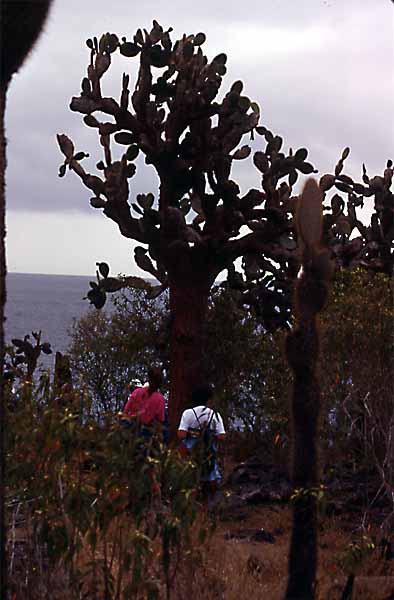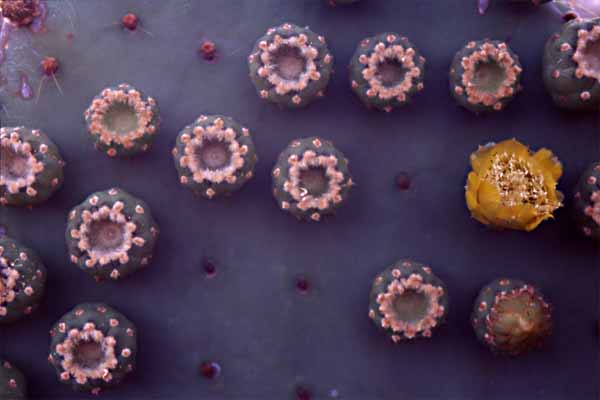CACTUS TREE
The cactus trees of the Galapagos are the world's biggest cactus species. They are true cacti in the family Cactaceae, comprised several thousand species. Many Galapagos cacti are endemic, including several species of Opuntia, the genus to which the cactus tree belongs. Cacti are different from most other plants because they have a photosynthesis system that is more efficient. Cacti do not have leaves and photosynthesis occurs in the green stems. The spines protect the soft, water-filled stems from hungry, thirsty animals, and if very dense, the spines shade the stem from the heat of the sun. |
Click below to see the photos and information on cacti:
cactus tree
cactus pad
CACTUS TREE
Click image to return to gallery
The tree-like cactus (Opuntia echios) occurs on most islands, but reach their greatest size on Santa Fé Island, where this photo was taken. They may grow to 35 feet high. Similar tree species occur on other islands, but the biggest recorded individual was on Santa Fé. It fell over during the rainy period of the 1997-98 El Niño. |
CACTUS PAD
Click image to return to gallery
This picture shows the sequence of flower development of Opuntia. An area from which spines are growing out swells up and develops a globular shape. The center fills (lower right) and then a flower bud forms. Opuntia flowers are bright yellow to orange in full-bloom. They produce lots of pollen and nectar and provide food for a variety of animals including the cactus finch, which depends on the cactus for sustenance. This picture was taken on Rabida Island, on the trail behind Red Beach. |
Learn about cactus tree natural history
next photo
|
|---|


